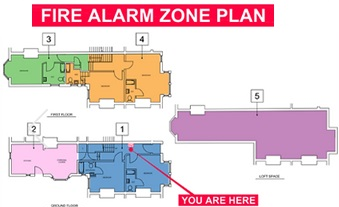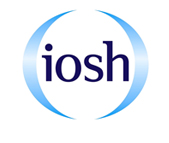Effective fire alarm systems are a critical element of workplace fire safety, ensuring early detection, alerting, and safe evacuation in the event of a fire. An often-overlooked requirement is the production and maintenance of Fire Alarm Zone Plans, which clearly show the coverage of detection zones and their corresponding alarms.
The Fire Industry Association (FIA) Technical Bulletin provides guidance on best practice for creating, updating and using these plans to support both operational safety and regulatory compliance under the Regulatory Reform (Fire Safety) Order 2005.
Purpose of fire alarm zone plans
Fire alarm zone plans are designed to:
- Identify the layout of detection zones and coverage areas.
- Assist building users, managers, and fire services in quickly locating the source of an alarm.
- Support system maintenance and testing by clearly showing which devices are in each zone.
- Facilitate safe evacuation by clarifying which areas are affected by specific alarms.
Key requirements according to FIA Guidance
- Zone Identification.
- Each fire alarm zone should be clearly numbered or labelled.
- Zones should correspond to logical areas of the building, taking into account occupancy, risk, and compartmentation.
Plan content
- Show all fire detection devices, manual call points, alarm sounders, and control panels.
- Include escape routes, fire doors, and assembly points.
- Indicate the relationship between zones and the main control panel.
Visibility and accessibility
- Zone plans should be displayed at control panels and other key locations.
- Ensure that staff and building users can quickly interpret the plan in an emergency.
Maintenance and review
- Plans must be kept up to date to reflect building modifications, system extensions, or changes in fire risk.
- Regular checks should form part of routine fire system maintenance.
Why zone plans are important
- They can improve response times during fire events.
- Facilitate efficient investigation of alarms, reducing false alarms and downtime.
- Support compliance with HSE and local fire authority expectations.
- Provide a clear reference for staff training and emergency drills.
Practical steps for employers
- Map Zones: Align detection zones with building layout and risk areas.
- Label Clearly: Use consistent numbering or coding for easy reference.
- Update Regularly: Reflect any building or system changes immediately.
- Display: Show plans at panels and key staff areas.
- Train Staff: Ensure all personnel understand how to interpret the plans.











